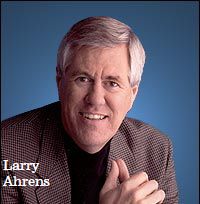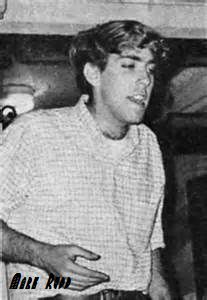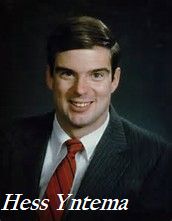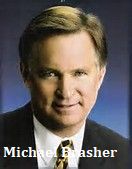
My job as anchor and reporter at KKOB was at a time when personal computers were just becoming standard office equipment. Basically what we were doing was writing stories on versions of word processing. Our desks had screens and keyboards, and those were almost all we needed to know. For our newscasts there were pre-recorded energetic sounding intros, such as “Now, from the KKOB computerized newsroom, here is Gordon Spencer.” Sitting in the news booth we had the option of reading what we’d printed or reading directly from a computer screen. I never took the risk of reading from the screen, as did morning drive anchor Frank Haley. Frank was part of what was sometimes called “The Morning Team,” the other members being program host Larry Ahrens and traffic reporter Brian Ward. Whenever I filled in for Frank, I was expected to do what Frank did with Larry, exchange banter after the newscast.
News director John Geddie required that our newscasts regularly contain audio clips recorded by our reporters and/or statements from someone who’d responded to our questions over the phone. Ideal length :45, given that these “cuts” had to fit in five-minute time frames. In order to include them on-air they were already set up on audio cartridges to play during the broadcast. Multiple clips for the same newscast would follow each other on the same cartridge; there was no way to use more than one; it would have meant too much distraction while reading copy live and no doubt would have been noisy.
To edit the cassette tapes for broadcast, there was no editing equipment. We’d simply choose the part we wanted, copy that onto the cartridge and stop it at the precise moment by pressing the cassette player’s pause switch. Primitive by today’s standards, but it worked.
We had police radio on in the newsroom at all times, listening for the codes identifying where and what police were being called to: 10-10, a fight in progress; 10-15, civil disturbance; 10-72, a shooting; 10-80, pursuit in progress; 10-100, dead body; and 10-4, message received. A standard phrase used was that someone “advised” the police about something instead of “informed” or “told.”
As reporters, we drove our own cars and had no direct contact with the station while away from it. No hand-held mobile phones. No CB radios, although our traffic reporters had those. We’d use pay phones to call the news editor on duty and tell him/her what was happening. Between the two of us, we’d then decide if it was worth coverage. If it was, the editor would decide how much coverage to give it, and how soon. Perhaps a return to the station to write the piece or pieces. If it seemed a story best covered ASAP, we were to phone in what we’d write on the spot. We also were instructed how many separate cuts we should file and how many seconds each should be. In setting up to record our copy over the phone, after identifying the subject, we’d say “coming down in 3,2,1” so that editor could tape it instantly. At some point, I became so adept that I didn’t always have to write the story but could ad-lib it, much as you see TV news reporters do regularly.

Once, when covering a trial, I interviewed one of the jurors. When asking his name, I was astonished that he was Mark Rudd. His was a name well-known from my New York, WBAI days in the ’60s. He had been a famed anti-war activist quite involved with the Weather Underground as well as the Students for a Democratic Society (SDS). Not bringing that up, I didn’t even ask him how he came to be in New Mexico. It didn’t feel right. It could have been a complex issue which had no bearing on that moment. Later I learned that he had been in Albuquerque since 1978 and taught at Albuquerque Technical Vocational Institute, later re-named Central New Mexico Community College.
Eventually John gave me a regular beat, a new one for KKOB, but, as a concept, a vital service to the community, not that that was my idea. I covered evening meetings of the Albuquerque City Council and the Bernalillo County Commission. Unlike some of my colleagues and other people I knew, who generally seemed cynical about all politicians, I admired what these people were trying to do and found their meetings and the ideas discussed constantly interesting. Clearly there were factions and antagonisms among them but I never tried to report on that. Given how short the few reports had to be, I tried to emphasize what they were accomplishing, believing that it was most important for listeners to know what their local governments were actually doing.


There were lots of friendly contacts with people whose names have stayed familiar. The two which stand out most are Hess Yntema and Michael Brasher. Hess was one of the more vocal members of the City Council and made a name for himself by often making public comments to the newspapers about issues which he felt were important. Moreover, his actual name struck some people as so unconventional that they assumed he was more quirky than he actually was. Michael and I had had contact with him because he was active in local radio as the manager of Albuquerque Public Schools’ radio station KANW, and he hung out with Mike Langner. Brasher always looked, sounded, and seemed young. I admired him for wanting to give his time and energy to local government. He, too, was one of the more vocal members of the Council.
Upon deciding to leave Albuquerque in the fall of 1990, the Council presented me with an award, a document citing my “fairness and objectivity” as the first “Electronic Reporter” to be so recognized.